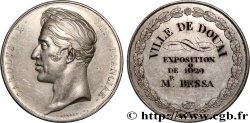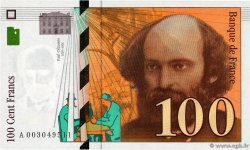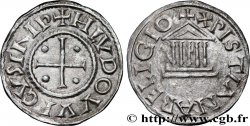Live auction - fme_1042783 - KARL X Médaille, Palais de la Bourse
Sie müssen angeschlossen sein und von cgb.fr genehmigt werden, um in einer E-Auktion teilzunehmen.Melden Sie sich an, um zu wetten..Die Kontobestätigungen sind innerhalb von 48 Stunden nach Ihrer Anmeldung gemacht.Warten Sie nicht bis die letzten zwei Tage vor dem Abschluss eines Verkaufs, um Ihre Registrierung abzuschließen. Klickend "BIETEN" verpflichten Sie sich vertraglich, diesen Artikel zu kaufen und Sie nehmen ohne Reserve die allgemeinen Verkaufsbedingungen für den live auctions zu cgb.fr an.
Der Verkauf wird an der Zeit auf der Übersichtsseite angezeigt geschlossen werden. Angebote, die nach der Schließung Zeit empfangen sind, werden nicht gültig.
Bitte beachten Sie, dass die Fristen für die Einreichung Ihres Angebots auf unsere Server können variieren und es kann zur Ablehnung Ihres Angebots entstehen, wenn es in den letzten Sekunden des Verkaufs gesendet wird. Die Angebote sollen mit ganzer Zahl ausgeführt sein, Sie können Kommas oder des Punktes in Ihrem Angebot nicht erfassen. Bei Fragen klicken Sie hier, um einen Blick auf die FAQ Live-Auktionen.
Alle Gewinngebote unterliegen einem Aufschlag von 18 % für Verkaufskosten.
Alle Gewinngebote unterliegen einem Aufschlag von 18 % für Verkaufskosten.
Type : Médaille, Palais de la Bourse
Datum: 1825
Name der Münzstätte / Stadt : 75 - Paris
Metall : Bronze
Durchmesser : 67,5 mm
Stempelstellung : 12 h.
Graveur PETIT Louis-Michel (1791-1844)
Gewicht : 140,81 g.
Rand lisse
Punze : sans poinçon
Kommentare zum Erhaltungszustand:
Jolie patine marron hétérogène avec quelques taches d’oxydation. Présence de quelques coups et rayures. Petite usure
N° im Nachschlagewerk :
Vorderseite
Titulatur der Vorderseite LOUIS XVIII - CHARLES X.
Beschreibung Vorderseite Bustes accolés à gauche de Louis XVIII et de Charles X. Signé : PETIT F..
Rückseite
Titulatur der Rückseite PALAIS DE LA BOURSE ET DU TRIB.AL DE COMM.CE / ACHEVÉ EN 1825.
Beschreibung Rückseite La ville de Paris assise à droite remet les clés à Mercure, devant le Palais de la Bourse de commerce ; légende en deux lignes à l’exergue.
Kommentare
Le palais Brongniart, anciennement appelé palais de la Bourse, est un édifice entouré d'un péristyle de style corinthien, qui accueillait la Bourse de Paris. Il est situé dans le quartier Vivienne, dans le 2e arrondissement de Paris. Il a été conçu par l’architecte Alexandre-Théodore Brongniart (1739-1813).
En 1807, Napoléon 1er confie la construction d’un édifice à l’architecte Alexandre-Théodore Brongniart (1739-1813). Il souhaite mettre en place un emblème de la puissance et de l’accomplissement auxquels la France est parvenue. En effet, les triomphes de l’empereur sur les champs de bataille développent un véritable commerce européen. Il commande en 1808 à l’architecte Alexandre-Théodore Brongniart un édifice à l’effigie du commerce : la Bourse de Paris. L’empereur espère ainsi instaurer un ordre dans l’économie du pays en centralisant l’ensemble des échanges économiques.
Cependant, A.T. Brongniart n’eut pas la possibilité de voir son œuvre achevée, mourant prématurément le 6 juin 1813.
Parmi les candidats à la reprise du projet, on compte François-Joseph Bélanger et Louis-Pierre Baltard.
C'est finalement Éloi Labarre (1764-1833) qui prit la succession de Brongniart et acheva l'édifice en novembre 1825.
The Brongniart Palace, formerly known as the Palais de la Bourse, is a building surrounded by a Corinthian-style peristyle, which housed the Paris Stock Exchange.. It is located in the Vivienne district, in the 2nd arrondissement of Paris. It was designed by the architect Alexandre-Théodore Brongniart (1739-1813).
In 1807, Napoleon I entrusted the construction of a building to the architect Alexandre-Théodore Brongniart (1739-1813). He wants to establish an emblem of the power and accomplishment that France has achieved.. Indeed, the emperor's triumphs on the battlefields developed a real European trade. In 1808, he commissioned the architect Alexandre-Théodore Brongniart to design a building in the image of commerce: the Paris Stock Exchange.. The emperor thus hoped to establish order in the country's economy by centralizing all economic exchanges..
However, A. T. Brongniart did not have the opportunity to see his work completed, dying prematurely on June 6, 1813..
Among the candidates to take over the project are François-Joseph Bélanger and Louis-Pierre Baltard.
It was finally Éloi Labarre (1764-1833) who took over from Brongniart and completed the building in November 1825
En 1807, Napoléon 1er confie la construction d’un édifice à l’architecte Alexandre-Théodore Brongniart (1739-1813). Il souhaite mettre en place un emblème de la puissance et de l’accomplissement auxquels la France est parvenue. En effet, les triomphes de l’empereur sur les champs de bataille développent un véritable commerce européen. Il commande en 1808 à l’architecte Alexandre-Théodore Brongniart un édifice à l’effigie du commerce : la Bourse de Paris. L’empereur espère ainsi instaurer un ordre dans l’économie du pays en centralisant l’ensemble des échanges économiques.
Cependant, A.T. Brongniart n’eut pas la possibilité de voir son œuvre achevée, mourant prématurément le 6 juin 1813.
Parmi les candidats à la reprise du projet, on compte François-Joseph Bélanger et Louis-Pierre Baltard.
C'est finalement Éloi Labarre (1764-1833) qui prit la succession de Brongniart et acheva l'édifice en novembre 1825.
The Brongniart Palace, formerly known as the Palais de la Bourse, is a building surrounded by a Corinthian-style peristyle, which housed the Paris Stock Exchange.. It is located in the Vivienne district, in the 2nd arrondissement of Paris. It was designed by the architect Alexandre-Théodore Brongniart (1739-1813).
In 1807, Napoleon I entrusted the construction of a building to the architect Alexandre-Théodore Brongniart (1739-1813). He wants to establish an emblem of the power and accomplishment that France has achieved.. Indeed, the emperor's triumphs on the battlefields developed a real European trade. In 1808, he commissioned the architect Alexandre-Théodore Brongniart to design a building in the image of commerce: the Paris Stock Exchange.. The emperor thus hoped to establish order in the country's economy by centralizing all economic exchanges..
However, A. T. Brongniart did not have the opportunity to see his work completed, dying prematurely on June 6, 1813..
Among the candidates to take over the project are François-Joseph Bélanger and Louis-Pierre Baltard.
It was finally Éloi Labarre (1764-1833) who took over from Brongniart and completed the building in November 1825








 Schliessungsdatum
Schliessungsdatum  Berichten über einen Fehler
Berichten über einen Fehler Die Seite drucken
Die Seite drucken Teilen meiner Auswahl
Teilen meiner Auswahl Stellen Sie eine Frage
Stellen Sie eine Frage Einlieferung/Verkauf
Einlieferung/Verkauf
 Details
Details














